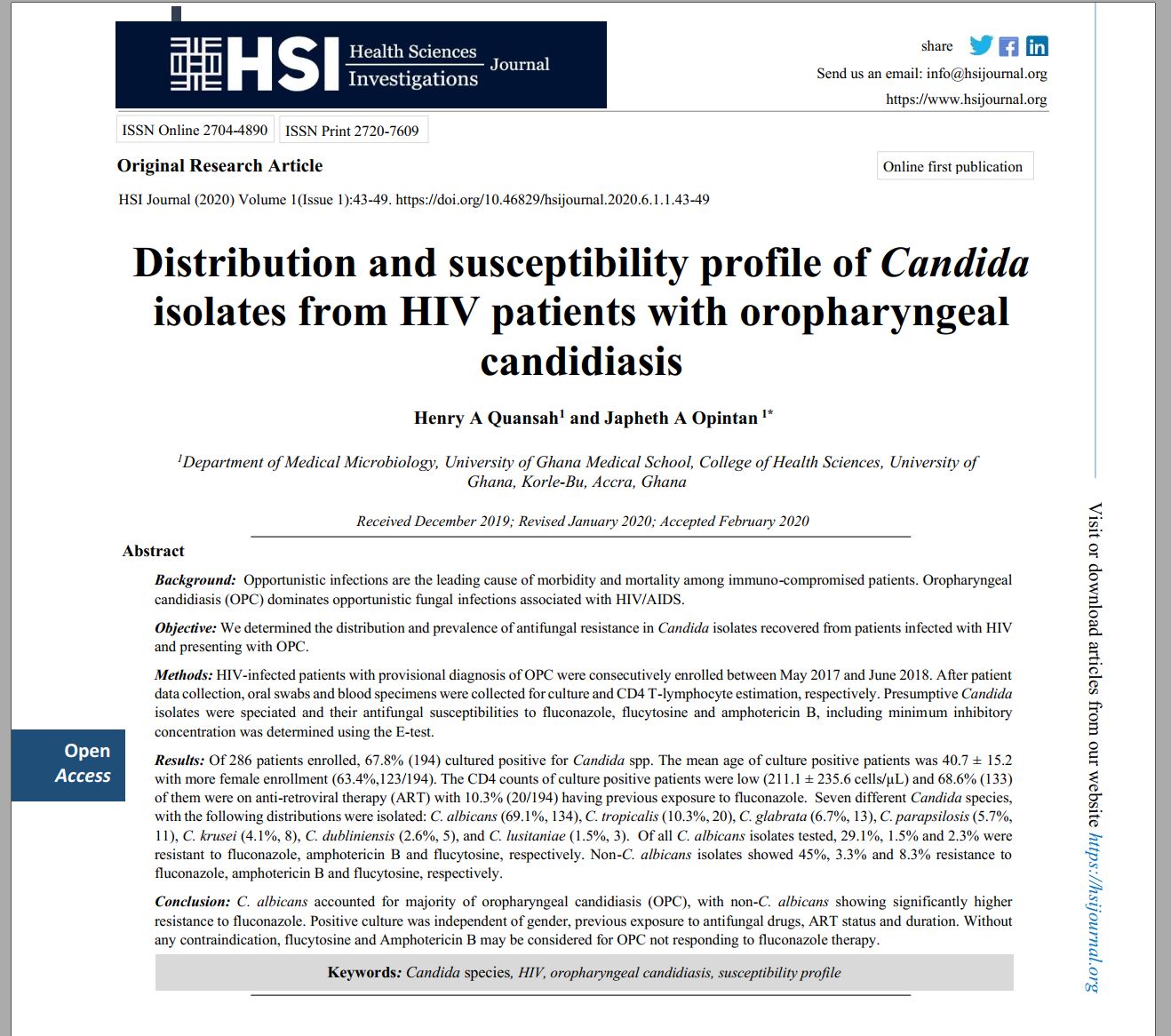Distribution and susceptibility profile of Candida isolates from HIV patients with oropharyngeal candidiasis
Oropharyngeal candidiasis in HIV patients
Abstract
Background: Opportunistic infections are the leading cause of morbidity and mortality among immuno-compromised patients. Oropharyngeal candidiasis (OPC) dominates opportunistic fungal infections associated with HIV/AIDS.
Objective: We determined the distribution and prevalence of antifungal resistance in Candida isolates recovered from patients infected with HIV and presenting with OPC.
Methods: HIV-infected patients with provisional diagnosis of OPC were consecutively enrolled between May 2017 and June 2018. After patient data collection, oral swabs and blood specimens were collected for culture and CD4 T-lymphocyte estimation, respectively. Presumptive Candida isolates were speciated and their antifungal susceptibilities to fluconazole, flucytosine and amphotericin B, including minimum inhibitory concentration was determined using the E-test.
Results: Of 286 patients enrolled, 67.8% (194) cultured positive for Candida spp. The mean age of culture positive patients was 40.7 ± 15.2 with more female enrollment (63.4%,123/194). The CD4 counts of culture positive patients were low (211.1 ± 235.6 cells/μL) and 68.6% (133) of them were on anti-retroviral therapy (ART) with 10.3% (20/194) having previous exposure to fluconazole. Seven different Candida species, with the following distributions were isolated: C. albicans (69.1%, 134), C. tropicalis (10.3%, 20), C. glabrata (6.7%, 13), C. parapsilosis (5.7%, 11), C. krusei (4.1%, 8), C. dubliniensis (2.6%, 5), and C. lusitaniae (1.5%, 3). Of all C. albicans isolates tested, 29.1%, 1.5% and 2.3% were resistant to fluconazole, amphotericin B and flucytosine, respectively. Non-C. albicans isolates showed 45%,
3.3% and 8.3% resistance to fluconazole, amphotericin B and flucytosine, respectively.
Conclusion: C. albicans accounted for majority of oropharyngeal candidiasis (OPC), with non-C. albicans showing significantly higher resistance to fluconazole. Positive culture was independent of gender, previous exposure to antifungal drugs, ART status and duration. Without any contraindication, flucytosine and Amphotericin B may be considered for OPC not responding to fluconazole therapy.


